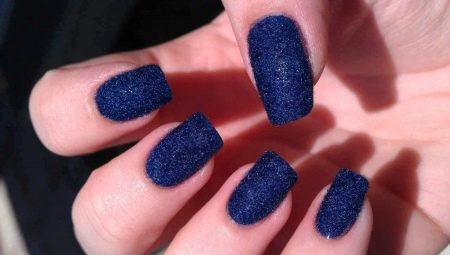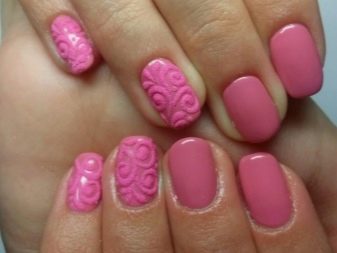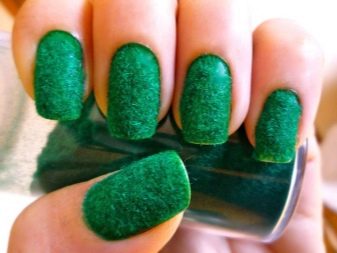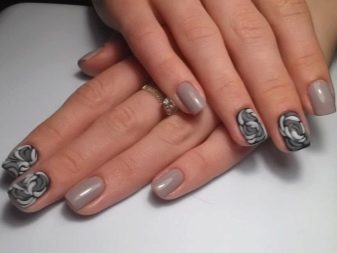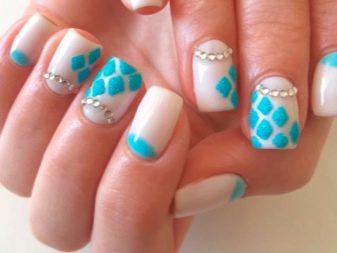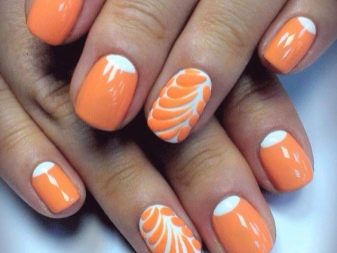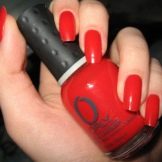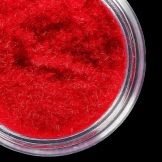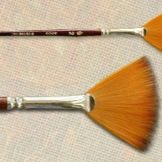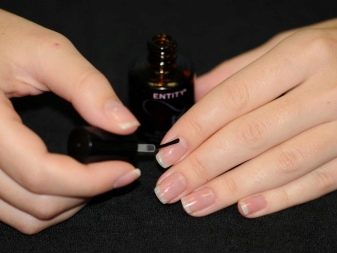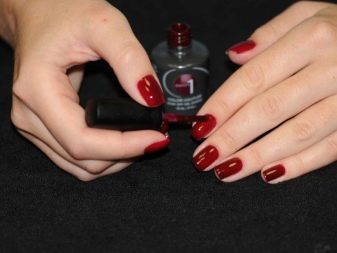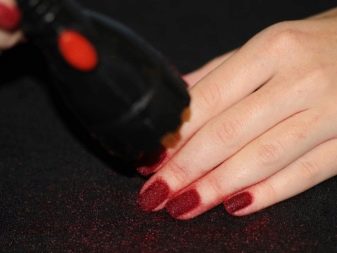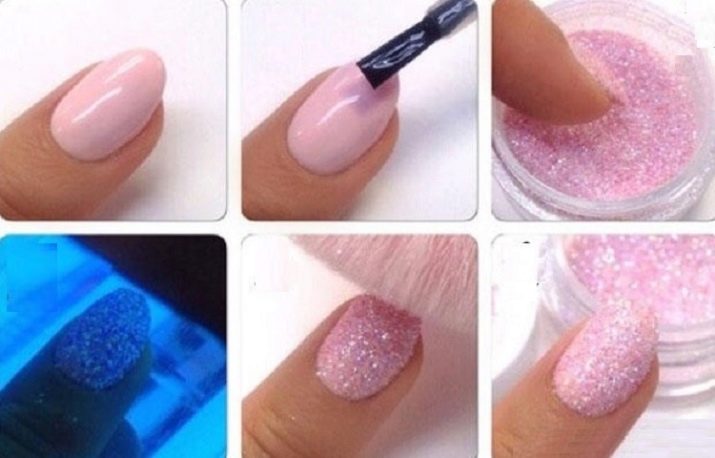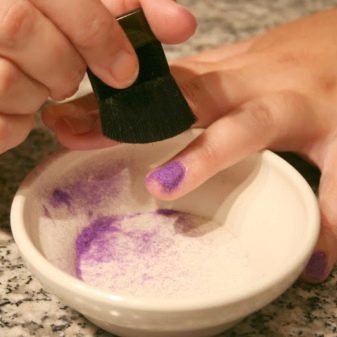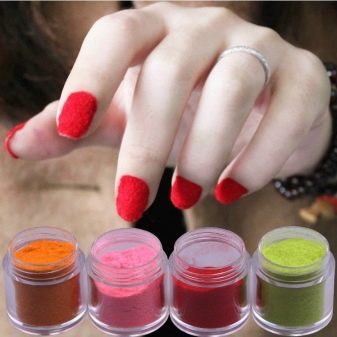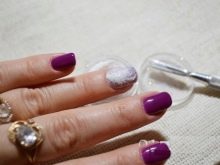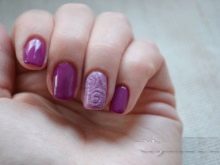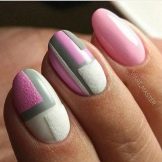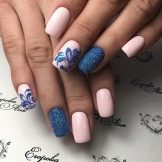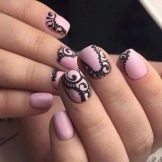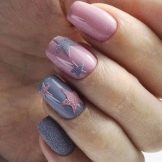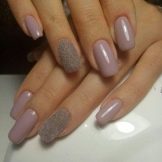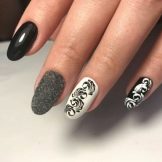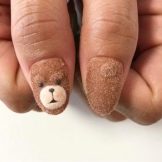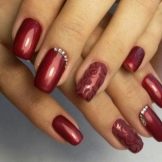Of course, each girl carefully cares for herself and, naturally, tries to keep her nails in a neat form. For a long time not a novelty is a "velvet" manicure on gel varnish, but not all women of fashion know how to apply it correctly. When this technique first appeared, it was made with the help of a special varnish, but today it is possible with the help of any material.
"Velvet" is perfect for creating an original manicure to complete your image.
Necessary materials
Zamsh is always in trend. Take, for example, suede shoes - they are always in demand, over time, only the shape of the nose or the size of the heel changes. The same alluring velvety can be applied to the nails, and for this you will come to the aid of the technique "sugar".
Since the “velvet” (or “teddy”) effect attracted many girls, brand companies immediately released suitable kits for such a manicure. But you can choose the necessary materials yourself, the main thing is to know exactly what to look for.
What materials will be required to create such an unusual nail art:
- transparent base;
- flock;
- varnish in flock tone;
- volume brush, better in the form of a fan;
- flat ditch.
For the base, you can take any colorless varnish with protective properties. Today there is a huge selection of lacquers that not only strengthen the nails, but also nourish them with various vitamins.
As for the flock, then the situation is a little more complicated. The structure of this material includes not only cotton and wool, but also viscose, so many professionals use other materials, such as: velvet and acrylic sand, star dust and coarser sand. When choosing a flock, pay attention to its structure. Large particles will create a huge amount, and small elements will give a manicure tenderness.
Remember that color lacquer should be as close as possible to the shade of flock or powder.
If you do not follow this rule, the natural gaps will be too striking, which will significantly worsen the appearance - the manicure will seem untidy.
Use the brush is necessary to remove excess flock. The brush must be elastic in order to remove the loose elements of the powder.
The ditch strip is needed to quickly collect excess material, so that later you can safely use it. Of course, if it is not available, then the cuvette can be easily replaced with a piece of paper or a piece of cardboard.
It is recommended when creating a manicure to use a protective mask to protect the airways from flock elements.
Creation of "velvet"
There are hundreds of different techniques that will help create a stunning and unusual manicure. Of course, every fashionista chooses what she likes, but you should pay attention to such an unusual manicure. This effect makes the design special, and even if you wish, you can vary it.
There are several variants of the technique for creating "plush" nails. And each of the options is slightly different. But there are also two rules that, if you fail to comply with them, you will certainly fail.
- If you create such a design at home, then you need to abandon your favorite gel polish, since its use requires special equipment. If you have everything you need, then it is better to do a manicure using gel polish - it lasts longer.
- The next thing to do is carefully prepare your nails.Otherwise, the manicure will look untidy.
The fact is that the "granulated sugar" attracts increased attention and even the slightest flaws will be clearly expressed.
After all the preparations you can begin to create this beauty.
- Apply a base transparent coating with a thin layer on all nails. If you are using gel polish, then after each item you need to dry the nails in the lamp.
- We cover the nails with one layer of colored lacquer, carefully working on the end of the nail.
- This is followed by a second layer. If the tone lays down tightly, then you can once again use the colorless varnish, and while the marigolds are not dry, carefully pour the nail plate with flock and press it with tapping movements. But do not be too zealous, the movements should be smooth, otherwise you may damage the varnish coat.
Manicurists are advised to simply dunk the nail in the flock or use tweezers for convenience. Unnecessary parts must be carefully and carefully removed with a brush.
If you have already done a manicure more than once and are able to use aids, then you will have no problems with creating velvet. Of course, the process can be simplified and significantly accelerated with an ultraviolet lamp, but this is not necessary.
Even if in the process of creating a manicure you made a mistake, do not worry, everything can be corrected with nail polish remover.
Velvet patterns
The process of creating velvet patterns is slightly different from the full coverage of the nail plate. Of course, before this manicure should prepare the nails, as before any other, and cover them with foundation. And only after these procedures, you can begin to create the desired pattern.
- With a transparent gel, paint fancy curls or a selected pattern.
- Color varnish once again draw the outline of the picture, while it is best to apply a more dense layer. So the drawing will look more voluminous and with clear contours.
- Cover the picture with sand or flock of your choice. Try to apply it evenly.
- Dry well with a lamp.
- Carefully remove the excess sugar with a brush. It is better to move from the cuticle to the edge of the nail - so you do not harm your manicure.
- If desired, you can fix the drawing top. Now dry the nails in the lamp again.
Pros and cons
Absolutely all decorative coatings for nails have both positive and negative points. "Sugar" is no exception to the rule.
Advantages:
- any kind of sand is easy to operate;
- low material consumption;
- it is universal, it is possible to use both for the, and artificial nails;
- unique design;
- resistance to application.
In addition, even a novice can cope with the technique of performing a velvet manicure.
Disadvantages:
- such a manicure in the salon will cost fashionable women a decent amount;
- at home performance resistance of the effect is significantly reduced;
- impractical in everyday life.
This manicure looks great, but is more applicable to ceremonial events. The texture of the flock is fragile and can wear off in everyday use. If applied incorrectly, instead of “plush” nails, you will get “hairy”.
How to create a "velvet" manicure, see the video below.
